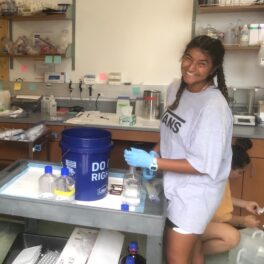A mass of marine debris discovered in a giant sinkhole on the island of Kauai‘i provides evidence that at least one mammoth tsunami, larger than any in Hawai‘i’s recorded history, has struck the islands, and that a similar disaster could happen again. Hawai‘i Institute of Geophysics and Planetology (HIGP) director Rhett Butler is the lead author of a paper reporting that a wall of water up to nine meters (30 feet) high surged onto Hawaiian shores about 500 years ago. It was triggered by a 9.0-magnitude earthquake off the coast of the Aleutian Islands and left behind up to nine shipping containers worth of ocean sediment in the Makauwahi sinkhole. Gerard Fryer, Pacific Tsunami Warning Center (PTWC) geophysicist and HIGP affiliate faculty, notes that the state is updating tsunami evacuation plans as a result of these findings.
Read more about it in the Washington Post, EarthSky and NBC News, PhysOrg, UH System News, and the AGU press release.














